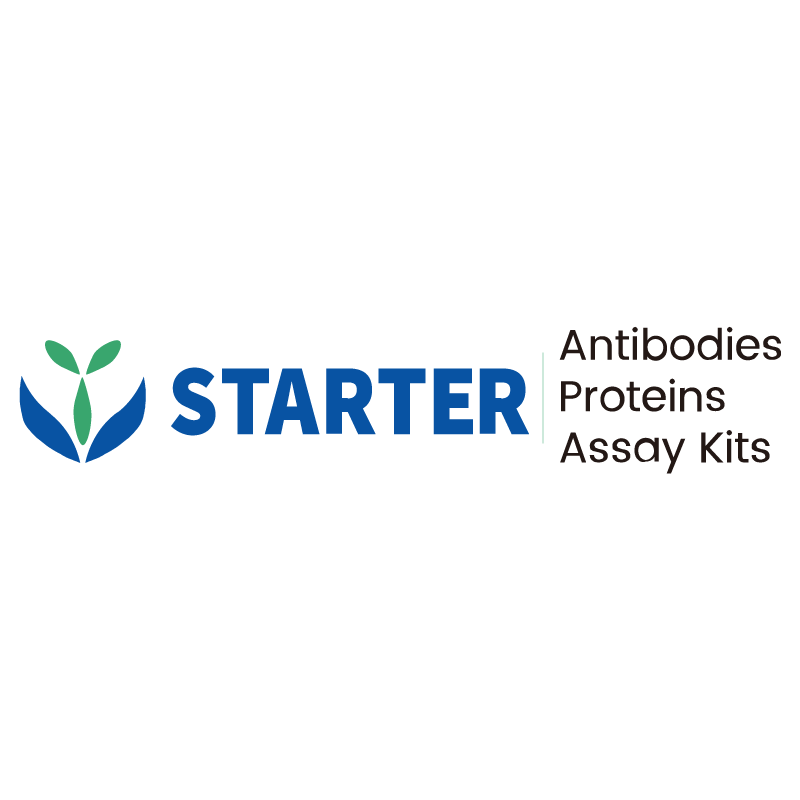WB result of IGF2BP1 Recombinant Rabbit mAb
Primary antibody: IGF2BP1 Recombinant Rabbit mAb at 1/1000 dilution
Lane 1: U-2 OS whole cell lysate 20 µg
Lane 2: Caco-2 whole cell lysate 20 µg
Lane 3: Jurkat whole cell lysate 20 µg
Lane 4: K562 whole cell lysate 20 µg
Lane 5: HeLa whole cell lysate 20 µg
Lane 6: 293T whole cell lysate 20 µg
Negative control: U-2 OS whole cell lysate
Secondary antibody: Goat Anti-rabbit IgG, (H+L), HRP conjugated at 1/10000 dilution
Predicted MW: 63 kDa
Observed MW: 68 kDa
Product Details
Product Details
Product Specification
| Host | Rabbit |
| Antigen | IGF2BP1 |
| Synonyms | Insulin-like growth factor 2 mRNA-binding protein 1; IGF2 mRNA-binding protein 1; IMP-1; IMP1; Coding region determinant-binding protein (CRD-BP); IGF-II mRNA-binding protein 1; VICKZ family member 1; Zipcode-binding protein 1 (ZBP-1); CRDBP; VICKZ1; ZBP1 |
| Immunogen | Recombinant Protein |
| Location | Cytoplasm |
| Accession | Q9NZI8 |
| Clone Number | S-2947-19 |
| Antibody Type | Recombinant mAb |
| Isotype | IgG |
| Application | WB, IHC-P |
| Reactivity | Hu, Ms |
| Positive Sample | Caco-2, Jurkat, K562, HeLa, 293T, NIH/3T3 |
| Purification | Protein A |
| Concentration | 0.5 mg/ml |
| Conjugation | Unconjugated |
| Physical Appearance | Liquid |
| Storage Buffer | PBS, 40% Glycerol, 0.05% BSA, 0.03% Proclin 300 |
| Stability & Storage | 12 months from date of receipt / reconstitution, -20 °C as supplied |
Dilution
| application | dilution | species |
| WB | 1:1000 | Hu, Ms |
| IHC-P | 1:1000 | Hu |
Background
IGF2BP1 (Insulin-like growth factor-2 mRNA-binding protein 1) is a 63-kDa oncofetal RNA-binding protein that contains four KH and two RRM domains and preferentially binds thousands of coding and non-coding transcripts—most prominently IGF2, MYC, KRAS, MDR1, and β-TRCP1 mRNAs—via conserved CAUH (H = A/C/U) motifs in their 3′-UTRs, thereby protecting them from endonucleolytic cleavage and miRNA-mediated silencing, stabilizing the transcripts, enhancing their translation, and consequently driving cell growth, self-renewal, migration, and chemoresistance in embryonic, stem, and cancer cells; the protein dynamically shuttles between the nucleus and cytoplasm in a methylation- and phosphorylation-regulated manner, localizes to stress granules and P-bodies, and its elevated expression in hepatocellular, colorectal, ovarian, pancreatic, and triple-negative breast carcinomas correlates with advanced stage, metastasis, and poor prognosis, making IGF2BP1 a promising prognostic biomarker and therapeutic target.
Picture
Picture
Western Blot
WB result of IGF2BP1 Recombinant Rabbit mAb
Primary antibody: IGF2BP1 Recombinant Rabbit mAb at 1/1000 dilution
Lane 1: NIH/3T3 whole cell lysate 20 µg
Secondary antibody: Goat Anti-rabbit IgG, (H+L), HRP conjugated at 1/10000 dilution
Predicted MW: 63 kDa
Observed MW: 68 kDa
Immunohistochemistry
IHC shows positive staining in paraffin-embedded human tonsil. Anti-IGF2BP1 antibody was used at 1/1000 dilution, followed by a HRP Polymer for Mouse & Rabbit IgG (ready to use). Counterstained with hematoxylin. Heat mediated antigen retrieval with Tris/EDTA buffer pH9.0 was performed before commencing with IHC staining protocol.
IHC shows positive staining in paraffin-embedded human testis. Anti-IGF2BP1 antibody was used at 1/1000 dilution, followed by a HRP Polymer for Mouse & Rabbit IgG (ready to use). Counterstained with hematoxylin. Heat mediated antigen retrieval with Tris/EDTA buffer pH9.0 was performed before commencing with IHC staining protocol.
IHC shows positive staining in paraffin-embedded human hepatocellular carcinoma. Anti-IGF2BP1 antibody was used at 1/1000 dilution, followed by a HRP Polymer for Mouse & Rabbit IgG (ready to use). Counterstained with hematoxylin. Heat mediated antigen retrieval with Tris/EDTA buffer pH9.0 was performed before commencing with IHC staining protocol.


